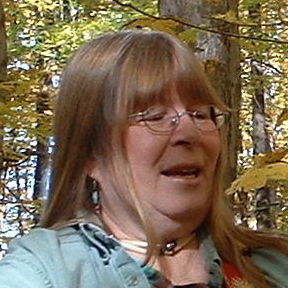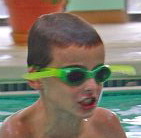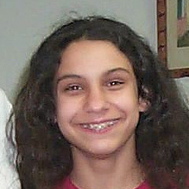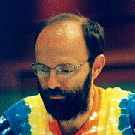
thomas leverett weblog
Friday, July 30, 2010
Thursday, July 29, 2010
Ladies' Night
Benefit for a Dog Park
Murphysboro Activity Center
(old Elks Club)
1401 Walnut St. Murphysboro
6-9 Tonight
Yours truly (Parsley & Sagebrush Band)
providing musical entertainment
Wednesday, July 28, 2010
what's shaking
The complete and utter silence of this blog may be a disappointment if by any chance you have been relying on me to keep you up on educational technology, happenings at CESL, Facebook and its use by universities, etc. Most likely you have other sources, though, so I'm not losing sleep over this. The fact is, I've been taken up by personal problems and reorganization issues; on top of that, it's been very hot here and that tends to slow me down a bit. This blog will just have to be a bit sleepier; that's all. But here's a little of what really is going on behind the scenes:reorganization: as you can see from the two links below, even replacing what used to be on the cesl web is complicated, depending on whether you publish a web page or a document, and since it's a large organizational problem, I thought I'd study it before I decide where to put volumes of my work. The time hasn't been there. Photos are an even larger issue. Most are going somewhere, but in an organized fashion? In a place where I can find them? I'm working on it.
language as a self-organized system: sorry to say, as you see below, I've only made part of my work (already 6-7 years old) available to daylight, and even that is not organized or truly accessible. I'm working on it.
The essence of the work is this: If language is a system that organizes itself, then it, like any similar system, has critical points at which its own dynamic changes by itself. Some of these critical points are perceptual. For example, when you decide that a certain word is a "default" word rather than a "specific situation" word, then you begin to use it in default situations and it has a firmer hold in a language. These points exist in people's conscious choice mechanisms; however, they can be measured, studied, and analyzed. The study of language change should ultimately account for this process. My writing will hopefully lay it out and define the terms.
making class movies: we made one about Facebook; it wasn't great, but I've kept the spirit going. I am not a world-class movie maker. I let the students run the editing machine, anyway. I could work on/improve upon this movie, but once again, time is an issue.
online materials: it occurred to me, while talking with webheads the other day, that it may be decades before I actually get some of my esl/efl materials online. I actually crank them out by the dozens, in daily production frenzies, and am quite good at the esl/intermediate genre which is difficult to manage. My collection is scattered on my desk and needs to be online where people can be using it. Once again it is a matter of organization which I have no time for. If I were tlev.com, I could have an online esl factory; perhaps I should team up with webhead friends or put-online-type people who could simply make a place for this stuff. Why have I not done it yet? Not sure.
student weblogs: falling into disrepair, as we rely more on moodle; I need to keep student names on them, keep them from becoming too bulky or too long; keep good pictures coming. help!
Tuesday, July 06, 2010
writing on self-organized systems
Leverett, T. (2006). Principles of self-organized systems. Available https://docs.google.com/document/edit?id=19qycnSQfOgxurzHtI4f_3AL0-2BpMHYFUhimUQAthAc&hl=en#.Leverett, T. (2006). Principles of language and language
change. Available http://docs.google.com/document/pub?id=1w-K6VnsbixP_oMwc4GhY0stIx5nDO8wRoO3bY94TJyA.
Is this really available? I hope so. I'm new to Google docs, using them, putting them on the web, sharing them, etc., but I hope to make old writing about self-organized systems available, and this is how I've chosen to try it. One by one, I'll put them here.
Labels: language, self-organized systems
Monday, July 05, 2010
traffic as a second language
My latest interest is something I've written about before but never explored entirely. My thesis is that language is a self-organized system, one in which the perceptions of the users play a key role: the "rules" which appear to govern everyone's behavior are actually a part of that perception, and play a role, but not a major role. In this respect language is a lot like traffic, and therefore I've been looking into traffic psychology. To this end I'd like to introduce a fascinating study I've found, but I'm not quite sure yet how it relates to language, so first I'll write a little about traffic and language: how are they similar? how different?Both are everyday actions involving a large variety of choices; in both cases the choices are governed primarily by perception of how others are behaving. In both cases we are trying to get from one point to another: communicating meaning is ensuring that what we mean is in fact delivered to another spot. Many of our decisions are gambles, based on previous experience, and our theory about how something will be interpreted or received.
Here are the differences: in traffic, risk can be fatal; in language, the greatest risk is misinterpretation (of course, misinterpretation can be fatal, but generally it's not, and this is why traffic risk is studied far more carefully than language risk). Second, in traffic, each operator operates a car, which weighs tons, and has behavior patterns of its own, including the possibility of malfunction; in language, we deal primarily with our mouths, although a whole branch of language is communicated through the written word in venues such as this. The vowels that we make with our mouths change over time and occupy space in the mouth relative to each other, but there is no corollary to this in the world of traffic, except maybe cars occupying large spaces such as parking lots that are unmarked, yet still maintain a kind of order that allows for each member's ability to move. Finally, in the world of traffic there is an actual set of laws, which determines what is legal and what is not, whereas, in grammar, for example, we have good models, like the NY Times, but we don't really have laws, as such, or if we do, nobody knows where to find them (even we, the community of teachers best prepared to find something that resembles a law...would be hard pressed to agree on a single set).
So here's the reference:
Wilde, Gerald J.S. (1994). Target Risk: Dealing with the danger of death, disease and damage in everyday decisions. Accessed June 2010 from http://psyc.queensu.ca/target/index.html#contents.
I read part of this one night when, actually, I was preoccupied by something else; nevertheless, I got a number of things from it which stuck with me, and then, later, I had trouble finding it. So now I've gone back, found it, and documented a few interesting facts. Here they are.
First, our day-to-day decisions are based on the concept of "risk homeostasis," which not everyone agrees with, but which is laid out pretty clearly here and elsewhere. It's a kind of balance; we want to get the most possible, or the farthest, or the fastest, not without risk, but with as little as possible, so we seek the balancing point beyond which the risk becomes too much; below this, however, the risk is quite low but life is too boring.
Second, our most common perceptions about cause and effect are often misguided; for example, we believe that the more traffic stops the police make, the less accidents there will be. A famous Nashville study, reported here, discounts that; but, my wife the sociologist agrees. Deterrence theory doesn't wash, she says, because the people who commit crimes are not really thinking of the likelihood of getting caught. Mr. Wilde would agree with part of that: that though accidents are caused by risky behavior, and risky behavior is influenced by the possibility of being caught, that is only one, and a very small one, factor in the choice one makes.
The experiences of Iceland and Sweden in changing lanes was a story that stuck with me, for some reason. Everyone assumed the accidents would skyrocket on the day each country changed the lanes they would drive on; this happened in late sixties, by the way, when each country decided to "drive on the right." In fact accident rates went way down, because everyone was very alert; even the pedestrians got a break during this short period. But after a while, "driving on the right" became normal, and people began to focus on other things. Eventually, the accident rate came back to where it had been, more or less.
There's more to this than meets the eye. It's about how a system is composed of the perceptions of its individual operators, and those perceptions determine the amount of risk, etc., that is going to determine the statistics and the way things play out. The system has self-correcting tendencies, but the system can also be changed for good in certain ways, never to be able to return to what it was. The idea that our behavior is "controlled" by a law or by fixed rules even, is an illusion; it might be influenced by the law, or at least by our perception of the law, but isn't controlled by it. Finally, our behavior is specific to each interaction; thus, we can be more careful in some environments than others, or, given some facts, we might alter our behavior from one place to another. Linguists have noticed "register," or formal language vs. informal, and used it to point out that people are basically the same way. But the system is made up of the sum total of everything everyone does, so we have to find a way to express, or calculate, the different kinds of behaviors (and changes in them) that people show as they go about their daily lives.
This, more or less, is what I'm after.
Labels: language, self-organized systems
























































